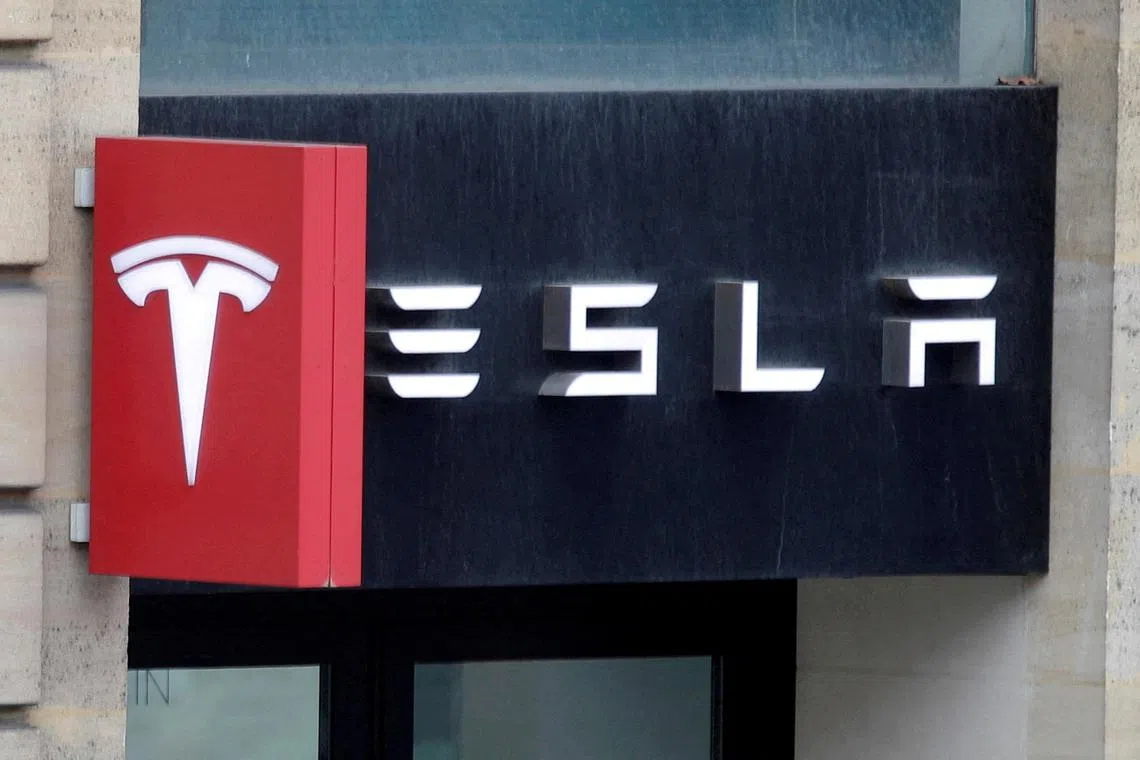Top Tesla executive, an Elon Musk confidant, leaves the company, sources say
Sign up now: Get ST's newsletters delivered to your inbox

There is slumping demand in Europe and North America for Tesla’s ageing vehicle line-up, while rivals have offered more affordable alternatives.
PHOTO: REUTERS
Follow topic:
Tesla executive and long-time Elon Musk confidant Omead Afshar has left the electric-vehicle maker, three people familiar with the matter said on June 26, another senior departure as the company grapples with slowing global demand.
Mr Afshar was part of the chief executive officer’s office and since 2024 had overseen sales and manufacturing in Europe and North America. After joining Tesla in 2017, he quickly became one of Mr Musk’s trusted lieutenants, playing a central role in major projects like the Texas Gigafactory.
The sources, who declined to be identified, had no details on the circumstances of his exit or the reason behind it. Mr Afshar posted about Tesla on social media platform X early this week, and his profiles on X and LinkedIn still showed his Tesla role as current on June 25.
Mr Afshar departed amid slumping demand in Europe and North America for Tesla’s ageing vehicle line-up, while rivals have offered more affordable alternatives.
Two people familiar with Tesla’s operations said Mr Afshar was among the executives who took on bigger roles in 2025 when Mr Musk was focused on Washington.
Mr Musk led President Donald Trump’s government cost-cutting drive
Former mid-level Tesla sales manager Matthew LaBrot, who was recently fired for public criticism of Mr Musk, said Mr Afshar was a “supporting character” closely tied to Mr Musk until he rose to head sales and manufacturing in North America and Europe.
Mr LaBrot said there was significant pressure internally to deal with the sales declines, which have been particularly severe in Europe.
Mr Afshar’s departure was reported earlier by Bloomberg News, which also reported that North America human resources director Jenna Ferrua had exited the company. Two of the three people who confirmed Mr Afshar’s departure to Reuters also said Ms Ferrua had left.
One of those people said Mr Afshar and Ms Ferrua were close colleagues, so it was not surprising that both left at around the same time. Another of the people said Ms Ferrua has served as a direct HR adviser to Mr Afshar.
The departure caps a series of executive exits over the past 14 months, driven by restructuring across the company as Tesla slashed thousands of jobs and shifted its focus to artificial intelligence-powered self-driving technology and robotics.
The departures included leaders in robots, batteries and public policy. The head of Tesla’s Optimus humanoid robot team, Mr Milan Kovac, announced he was leaving in June, and top battery executive Vineet Mehta did so in May.
Chief battery engineer Drew Baglino; Ms Rebecca Tinucci, who led the supercharging division; and global public policy head Rohan Patel left in spring 2024.
Mr Musk ended his Washington stint in late May, reassuring some investors concerned about brand damage. But Tesla’s shares remain down about 19 per cent for the year, after an initial rise on optimism that Mr Trump’s victory would clear the regulatory path for robotaxis.
On June 22, Tesla deployed self-driving taxis in Austin, Texas. Some analysts have warned that the company’s plan to expand to other cities later in 2025 could face hurdles, due to concerns about safety and the technology.
On June 23, Mr Afshar posted on X that the Austin robotaxi debut was an “absolutely historic day for Tesla”, adding: “Thank you, Elon, for pushing us all!”
In the past, Mr Afshar posted about spending holidays and late nights with Mr Musk, particularly when Tesla was ramping up production of the mass market Model 3 sedan in 2018. He reflected in a March post about “living in the factory at this time, truly 24/7”. REUTERS

